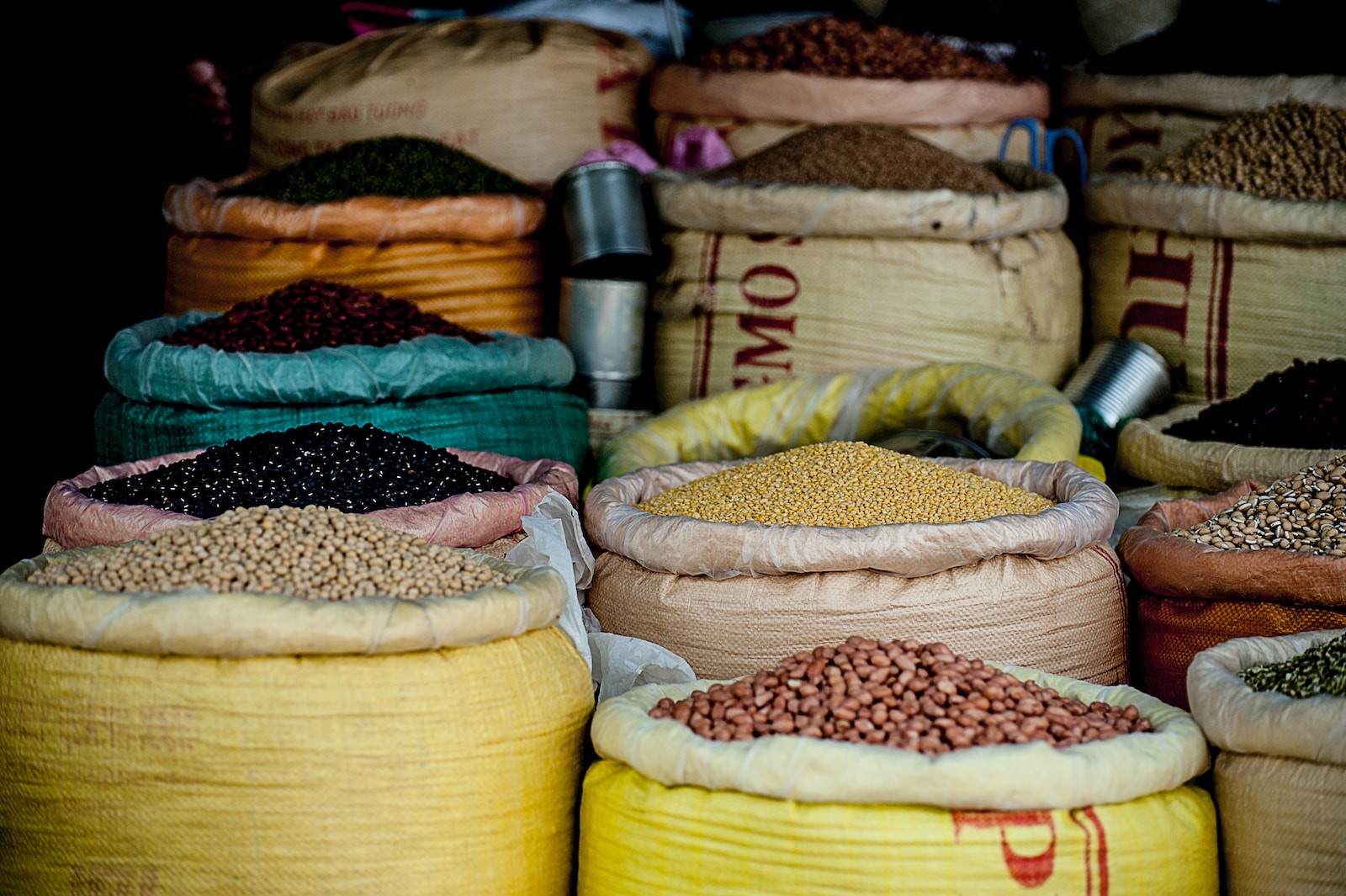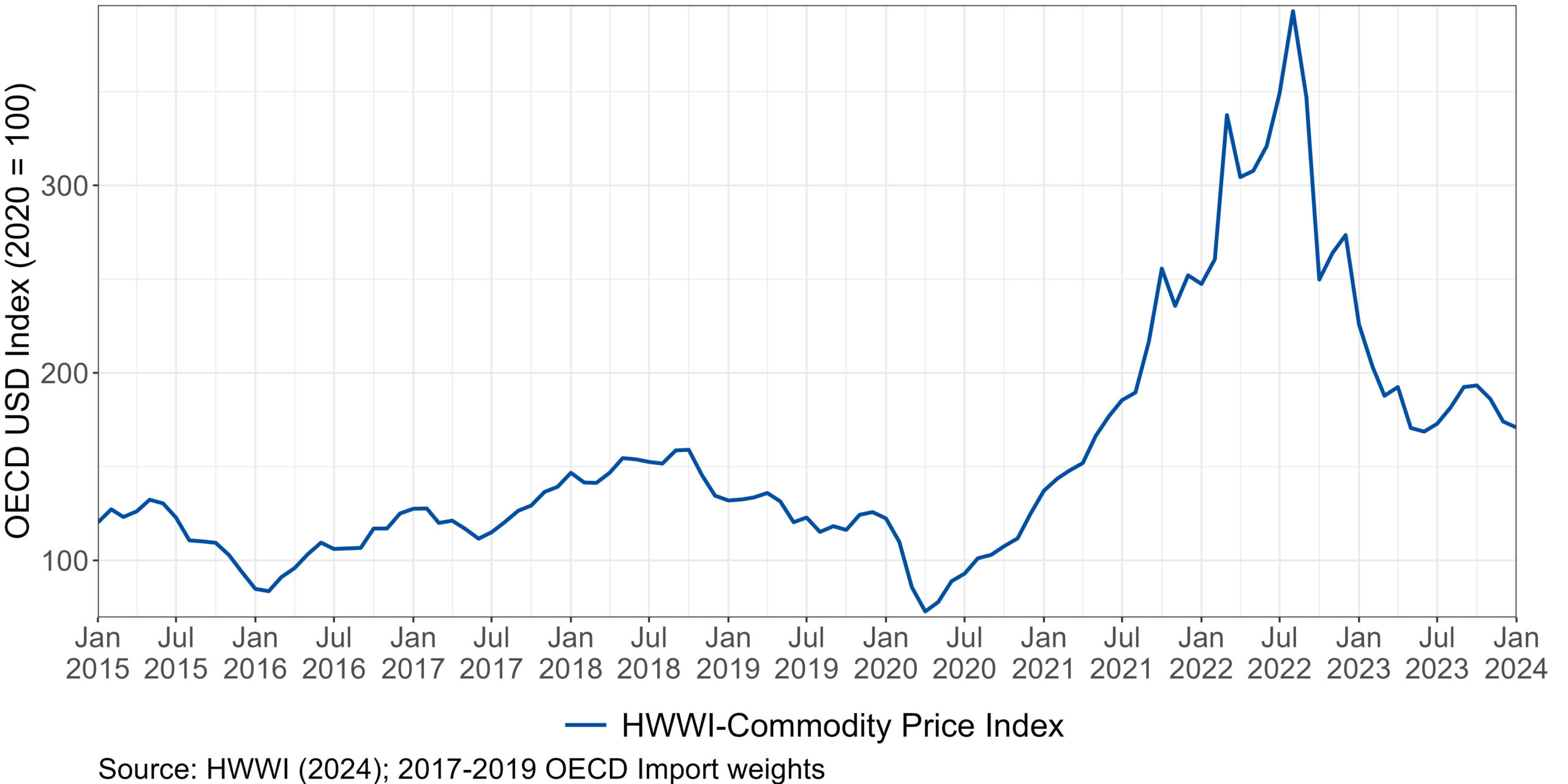
HWWI-Commodity Price Index continues to decrease
Commodity prices have fallen sharply since their peak in summer 2022 (see figure). From its peak in August 2022, when the index stood at almost 400, the HWWI-Commodity Price Index halved by the beginning of 2023. Since then, it has fluctuated around a value of 175. After commodity prices rose again in autumn last year, they have fallen noticeably in the last three months. A particularly sharp decline was observed in December 2023, when the index fell by as much as 6.5 % compared to the previous month. In January 2024, the HWWI-Commodity Price Index averaged 170.84 (as at 9 February 2024).
The most recent development of the HWWI-Commodity Price Index is primarily driven by the price trends for sugar, natural gas (from Europe) and coal, for which prices fell sharply in December 2023.
On the gas market in Europe, sufficient supply due to full gas storage facilities, the sustained substitution of Russian natural gas and the relatively low demand for gas due to mild temperatures in Europe have eased the situation. However, a further deterioration in the geopolitical situation in the Middle East and the attacks in the Red Sea could lead to price fluctuations in the future. In the USA, on the other hand, cold temperatures and the high global demand for LNG have caused the US natural gas price to rise recently.
The price of coal has also decreased strongly and is 61.8 % lower than in January 2023. Both the Australian and South African coal prices are trending downwards. Stable coal supply meets relatively weak demand. This is also due to a stronger substitution of coal in favor of renewable energies in electricity generation. In Australia, however, recent flooding caused coal prices to rise slightly.
Sugar prices have continued to fall sharply. Prices here fell by almost 19 % in December compared to the previous month. One of the reasons for this is likely to be the increase in production in Brazil, one of the world’s largest sugar producers. At the same time, demand for sugar has recently fallen due to declining ethanol production.
Although oil prices also fell in November and December, they have been rising again since the beginning of 2024, so that no clear trend can be observed.
In contrast, cocoa prices have recently bucked the downward trend. The cocoa price has risen in the last three months and reached a new high in January 2024. Cocoa prices are also high in a longer-term comparison and were around 75 % higher in January 2024 than in the same month of the previous year. Poor weather conditions in West Africa led to low cocoa harvest. Low stocks are also increasing the pressure on prices and pushing them to record highs. Harvest conditions are not expected to improve in the near future either, meaning that pressure on prices is likely to continue to grow. However, as the cocoa price only has a small weighting in the HWWI-Commodity Price Index, this price trend only has a moderate impact on the overall index.
Rising price trends can also be observed in the industrial raw materials sector. In particular, prices for steel and iron ore have increased. However, prices for agricultural commodities such as wool, wood, rubber and pulp have also risen recently. Due to the comparatively high weighting, the price increase for iron ore has the greatest impact on the HWWI overall index. The continued high demand for iron ore, particularly due to the revival of China’s economy, caused the price of iron ore to rise until the end of January 2024. Low inventories in China could generate further demand. However, much of the demand comes from China’s stimulus programme, which is intended to revive the fragile real estate sector. This could lead to further price fluctuations. The latest economic figures from China already indicate this. The price of copper has also risen recently, mainly due to a trend towards better growth prospects and supply shortages (particularly as a result of the mine closures in Panama).
The index for food and beverages has fallen slightly in the last three months and at the was around 8 % lower in January 2024 than in the same month last year. At the current margin, however, the index is very volatile, meaning that no clear trend can be observed.

Press Contact

Contact

Marina Eurich
